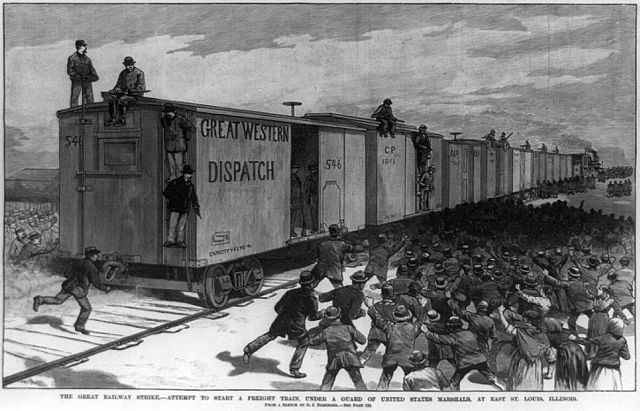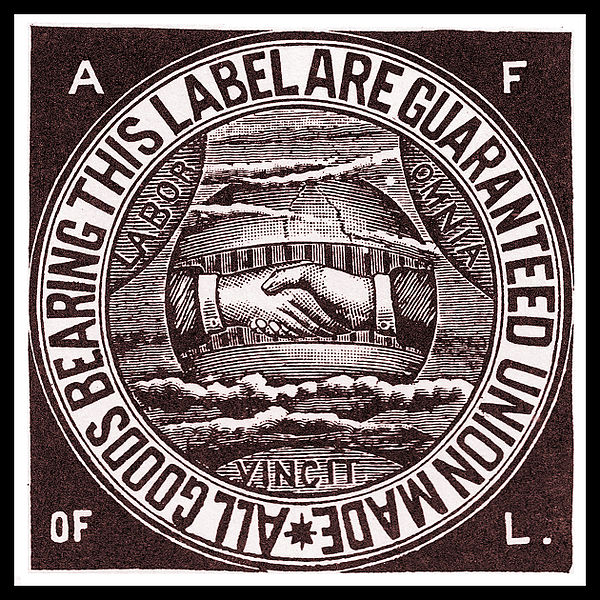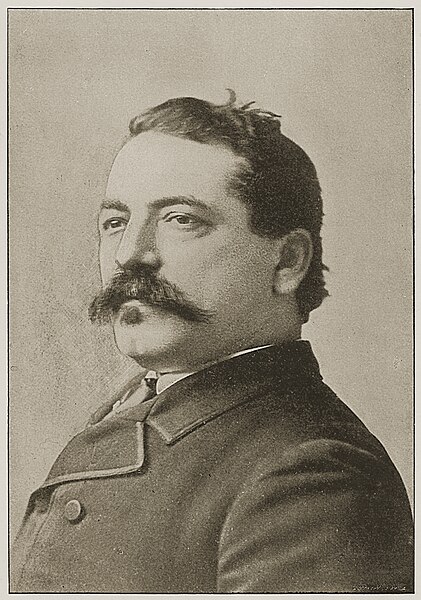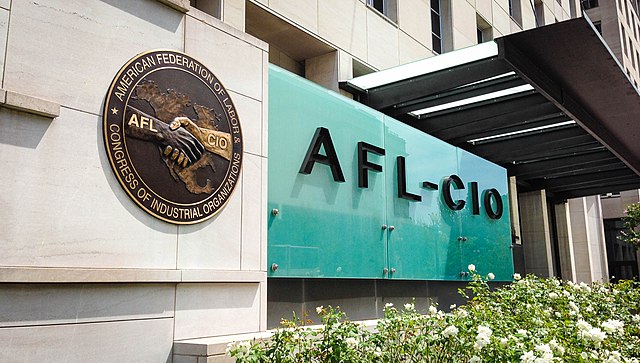Labor history of the United States
The nature and power of organized labor in the United States is the outcome of historical tensions among counter-acting forces involving workplace rights, wages, working hours, political expression, labor laws, and other working conditions. Organized unions and their umbrella labor federations such as the AFL–CIO and citywide federations have competed, evolved, merged, and split against a backdrop of changing values and priorities, and periodic federal government intervention.
The Great Southwest Railroad Strike of 1886 was a trade union strike involving more than 200,000 workers.
The American Federation of Labor union label, c. 1900
Samuel Gompers in 1894; he was the AFL leader 1886–1924.
New York City shirtwaist workers on strike, taking a lunch break
The American Federation of Labor and Congress of Industrial Organizations (AFL-CIO) is a national trade union center that is the largest federation of unions in the United States. It is made up of 60 national and international unions, together representing more than 12 million active and retired workers. The AFL-CIO engages in substantial political spending and activism, typically in support of progressive and pro-labor policies.
AFL-CIO headquarters in Washington, DC





